Experimental and Theoretical Studies of a Spirostannole and Formation of a Pentaorganostannate †
Abstract
1. Introduction
2. Results and Discussion
3. Materials and Methods
4. Conclusions
Supplementary Materials
Author Contributions
Funding
Acknowledgments
Conflicts of Interest
References
- Yamaguchi, S.; Itami, Y.; Tamao, K. Group 14 Metalloles with Thienyl Groups on 2,5-Positions: Effects of Group 14 Elements on Their π-Electronic Structures †. Organometallics 1998, 17, 4910–4916. [Google Scholar] [CrossRef]
- Linshoeft, J.; Baum, E.J.; Hussain, A.; Gates, P.J.; Näther, C.; Staubitz, A. Highly Tin-Selective Stille Coupling: Synthesis of a Polymer Containing a Stannole in the Main Chain †. Angew. Chem. Int. Ed. 2014, 53, 12916–12920. [Google Scholar] [CrossRef] [PubMed]
- Matsumura, Y.; Sugihara, M.; Tan, S.E.; Sato, T.; Hayashi, K.; Nishiyama, H.; Zhou, W.M.; Inagi, S.; Tomita, I. Synthesis of Stannole-Containing π-Conjugated Polymers by Post-Element Transformation of Organotitanium Polymer. Macromol. Rapid Commun. 2019, 40, e1800929. [Google Scholar] [CrossRef] [PubMed]
- Zhou, W.-M.; Tomita, I. Synthesis and Properties of Stannole-Containing Polymers by Reaction of Bis(cyclopentadienyl)titanacyclopentadiene-Containing Polymers and Tin(IV) Chloride. J. Inorg. Organomet. Polym. 2009, 19, 113–117. [Google Scholar] [CrossRef]
- Gendron, D.; Morin, P.-O.; Berrouard, P.; Allard, N.; Aïch, B.R.; Garon, C.N.; Tao, Y.; Leclerc, M. Synthesis and Photovoltaic Properties of Poly(dithieno[3,2-b:2′,3′-d]germole) Derivatives. Macromolecules 2011, 44, 7188–7193. [Google Scholar] [CrossRef]
- Li, Z.; Dong, Y.Q.; Lam, J.W.Y.; Sun, J.; Qin, A.; Häußler, M.; Dong, Y.P.; Sung, H.H.Y.; Williams, I.D.; Kwok, H.S.; et al. Functionalized siloles: Versatile synthesis, aggregation-induced emission, and sensory and device applications. Adv. Funct. Mater. 2009, 19, 905–917. [Google Scholar] [CrossRef]
- Leavitt, F.C.; Manuel, T.A.; Johnson, F.; Matternas, L.U.; Lehman, D.S. Novel heterocyclopentadienes. II. J. Am. Chem. Soc. 1960, 82, 5099–5102. [Google Scholar] [CrossRef]
- Sau, A.C.; Day, R.O.; Holmes, R.R. New geometrical form for tin. Synthesis and structure of the spirocyclic complex [(CH3)4N][(C7H6S2)2SnCl] and the related monocyclic derivative [(C2H5)4N][(C7H6S2)Ph2SnCl]. Inorg. Chem. 1981, 20, 3076–3081. [Google Scholar] [CrossRef]
- Wrackmeyer, B.; Kehr, G.; Ali, S. Cyclic bis (amino) organotin cations, stabilized by π-coordination and new spirocyclic stannole derivatives. Inorg. Chim. Acta 1994, 216, 51–55. [Google Scholar] [CrossRef]
- Krause, J.; Haack, K.-J.; Pörschke, K.-R.; Gabor, B.; Goddard, R.; Pluta, C.; Seevogel, K. A Palladium-Catalyzed stannole synthesis. J. Am. Chem. Soc. 1996, 118, 804–821. [Google Scholar] [CrossRef]
- Saito, M.; Haga, R.; Yoshioka, M. Formation of the first monoanion and dianion of stannole. Chem. Commun. 2002, 9, 1002–1003. [Google Scholar] [CrossRef] [PubMed]
- Tracy, H.J.; Mullin, J.L.; Klooster, W.T.; Martin, J.A.; Haug, J.; Wallace, S.; Rudloe, I.; Watts, K. Enhanced photoluminescence from group 14 metalloles in aggregated and solid solutions. Inorg. Chem. 2005, 44, 2003–2011. [Google Scholar] [CrossRef] [PubMed]
- Tanaka, D.; Ohshita, J.; Ooyama, Y.; Kobayashi, N.; Higashimura, H.; Nakanishi, T.; Hasegawa, Y. Synthesis, optical properties, and crystal structures of dithienostannoles. Organometallics 2013, 32, 4136–4141. [Google Scholar] [CrossRef]
- Wrackmeyer, B.; Khan, E. 1, 1-Carboboration through Activation of Silicon–Carbon and Tin–Carbon Bonds. Eur. J. Inorg. Chem. 2016, 2016, 300–312. [Google Scholar] [CrossRef]
- Ramirez y Medina, I.-M.; Rohdenburg, M.; Mostaghimi, F.; Grabowsky, S.; Swiderek, P.; Beckmann, J.; Hoffmann, J.; Dorcet, V.; Hissler, M.; Staubitz, A. Tuning the optoelectronic properties of stannoles by the judicious choice of the organic substituents. Inorg. Chem. 2018, 57, 12562–12575. [Google Scholar] [CrossRef] [PubMed]
- Saito, M. Creation of Exotic π-Electron Systems by Introduction of Heavy Elements and Expansion of the Concept of Aromaticity. Bull. Chem. Soc. Jpn. 2018, 91, 1009–1019. [Google Scholar] [CrossRef]
- Ramirez y Medina, I.-M.; Rohdenburg, M.; Lork, E.; Staubitz, A. Aggregation induced emission–emissive stannoles in the solid state. Chem. Commun. 2020, 56, 9775–9778. [Google Scholar] [CrossRef] [PubMed]
- Hoffmann, J.; Kuczmera, T.J.; Lork, E.; Staubitz, A. Synthesis, Structure, Thermal Behavior and cis/trans Isomerization of 2, 2′-(EMe3) 2 (E = C, Si, Ge, Sn) Substituted Azobenzenes. Molecules 2019, 24, 303. [Google Scholar] [CrossRef]
- Strueben, J.; Lipfert, M.; Springer , J.-O.; Gould, C.A.; Gates, P.J.; Sönnichsen, F.D.; Staubitz, A. High-Yield Lithiation of Azobenzenes by Tin–Lithium Exchange. Chem. Eur. J. 2015, 21, 11165–11173. [Google Scholar] [CrossRef]
- Reich, H.J.; Phillips, N.H. Lithium pentaalkyl/aryl stannate complexes as intermediates in the lithium-tin exchange reaction. Pure Appl. Chem. 1987, 59, 1021–1026. [Google Scholar] [CrossRef]
- Clayden, J. Organolithiums: Selectivity for Synthesis; Elsevier: Oxford, UK, 2002. [Google Scholar]
- Seyferth, D.; Weiner, M.A. Preparation of Organolithium Compounds by the Transmetalation Reaction. III. Allyllithium and Methallyllithium1,2a. J. Org. Chem. 1961, 26, 4797. [Google Scholar] [CrossRef]
- Seyferth, D.; Mammarella, R.E. The preparation of substituted allyllithium reagents from allyltin compounds by transmetalation. J. Organomet. Chem. 1979, 177, 53–65. [Google Scholar] [CrossRef]
- Reich, H.J.; Mason, J.D.; Holladay, J.E. Lithium metalloid exchange: Reactivity studies of an allenyllithium reagent using an isomeric pair of allenyl and prop-2-ynyl stannanes. J. Chem. Soc. Chem. Commun. 1993, 19, 1481–1483. [Google Scholar] [CrossRef]
- Reich, H.J.; Phillips, N.H. Lithium-metalloid exchange reactions. Observation of lithium pentaalkyl (aryl) tin ate complexes. J. Am. Chem. Soc. 1986, 108, 2102–2103. [Google Scholar] [CrossRef]
- Reich, H.J.; Reich, I.L.; Yelm, K.E.; Holladay, J.E.; Gschneidner, D. Synthesis of 2, 3-disubstituted 1, 3-butadienes from organotin precursors and butadienyllithium reagents: Diels-Alder reactivity. J. Am. Chem. Soc. 1993, 115, 6625–6635. [Google Scholar] [CrossRef]
- Saito, M.; Imaizumi, S.; Tajima, T.; Ishimura, K.; Nagase, S. Synthesis and structure of pentaorganostannate having five carbon substituents. J. Am. Chem. Soc. 2007, 129, 10974–10975. [Google Scholar] [CrossRef] [PubMed]
- Saito, M.; Imaizumi, S.; Tajima, T. Formation of Pentaorganostannates from Bis (2-bromo-2′-biphenyl) stannanes and tert-Butyllithium upon Substitution of Alkyl and Aryl Groups on Tin Atoms. Eur. J. Inorg. Chem. 2010, 2010, 2153–2157. [Google Scholar] [CrossRef]
- Grolleau, J.; Frère, P.; Gohier, F. Clean and Efficient Iodination of Thiophene Derivatives. Synthesis 2015, 47, 3901–3906. [Google Scholar]
- Rosenthal, U.; Ohff, A.; Baumann, W.; Tillack, A.; Görls, H.; Burlakov, V.V.; Shur, V.B. Struktur, Eigenschaften und NMR-spektroskopische Charakterisierung von Cp2Zr(Pyridin)(Me3SiC=CSiMe3). Z. Anorg. Allg. Chem. 1995, 621, 77–83. [Google Scholar] [CrossRef]
- Urrego-Riveros, S.; Ramirez y Medina, I.-M.; Duvinage, D.; Lork, E.; Sönnichsen, F.D.; Staubitz, A. Negishi’s Reagent Versus Rosenthal’s Reagent in the Formation of Zirconacyclopentadienes. Chem. Eur. J. 2019, 25, 13318–13328. [Google Scholar] [CrossRef]
- Adamo, C.; Barone, V. Toward reliable density functional methods without adjustable parameters: The PBE0 model. J. Chem. Phys. 1999, 110, 6158–6170. [Google Scholar] [CrossRef]
- AMcLean, D.; Chandler, G.S. Contracted Gaussian basis sets for molecular calculations. I. Second row atoms, Z = 11 – 18. J. Chem. Phys. 1980, 72, 5639–5648. [Google Scholar] [CrossRef]
- Krishnan, R.; Binkley, J.S.; Seeger, R.; Pople, J.A. Self-consistent molecular orbital methods. XX. A basis set for correlated wave functions. J. Chem. Phys. 1980, 72, 650–654. [Google Scholar] [CrossRef]
- McGrath, M.P.; Radom, L. Extension of Gaussian-1 (G1) theory to bromine-containing molecules. J. Chem. Phys. 1991, 94, 511–516. [Google Scholar] [CrossRef]
- Binning, R.C., Jr.; Curtiss, L.A. Compact contracted basis sets for third-row atoms: Ga–Kr. J. Comput. Chem. 1990, 11, 1206–1216. [Google Scholar] [CrossRef]
- Curtiss, L.A.; McGrath, M.P.; Blaudeau, J.; Davis, N.E.; Binning, R.C.; Radom, L. Extension of Gaussian-2 theory to molecules containing third-row atoms Ga–Kr. J. Chem. Phys. 1995, 103, 6104–6113. [Google Scholar] [CrossRef]
- Grimme, S.; Antony, J.; Ehrlich, S.; Krieg, H. A consistent and accurate ab initio parametrization of density functional dispersion correction (DFT-D) for the 94 elements H-Pu. J. Chem. Phys. 2010, 132, 154104. [Google Scholar] [CrossRef]
- Grimme, S.; Ehrlich, S.; Goerigk, L. Effect of the damping function in dispersion corrected density functional theory. J. Comput. Chem. 2011, 32, 1456–1465. [Google Scholar] [CrossRef] [PubMed]
- Igel-Mann, G.; Stoll, H.; Preuss, H. Pseudopotentials for main group elements (IIIa through VIIa). Mol. Phys. 1988, 65, 1321–1328. [Google Scholar] [CrossRef]
- Bergner, A.; Dolg, M.; Küchle, W.; Stoll, H.; Preuß, H. Ab initio energy-adjusted pseudopotentials for elements of groups 13–17. Mol. Phys. 1993, 80, 1431–1441. [Google Scholar] [CrossRef]
- Sheldrick, G.M. A short history of SHELX. Acta Cryst. 2008, 64, 112–122. [Google Scholar] [CrossRef] [PubMed]
- Farrugia, L.J. WinGX suite for small-molecule single-crystal crystallography. J. Appl. Cryst. 1999, 32, 837–838. [Google Scholar] [CrossRef]
- Dolomanov, O.V.; Bourhis, L.J.; Gildea, R.J.; Howard, J.A.K.; Puschmann, H. OLEX2: A complete structure solution, refinement and analysis program. J. Appl. Cryst. 2009, 42, 339–341. [Google Scholar] [CrossRef]
- Frisch, M.J.; Trucks, G.W.; Schlegel, H.B.; Scuseria, G.E.; Robb, M.A.; Cheeseman, J.R.; Scalmani, G.; Barone, V.; Mennucci, B.; Petersson, G.A.; et al. Gaussian 16 Revision A.03; Gaussian, Inc.: Wallingford, CT, USA, 2016. [Google Scholar]
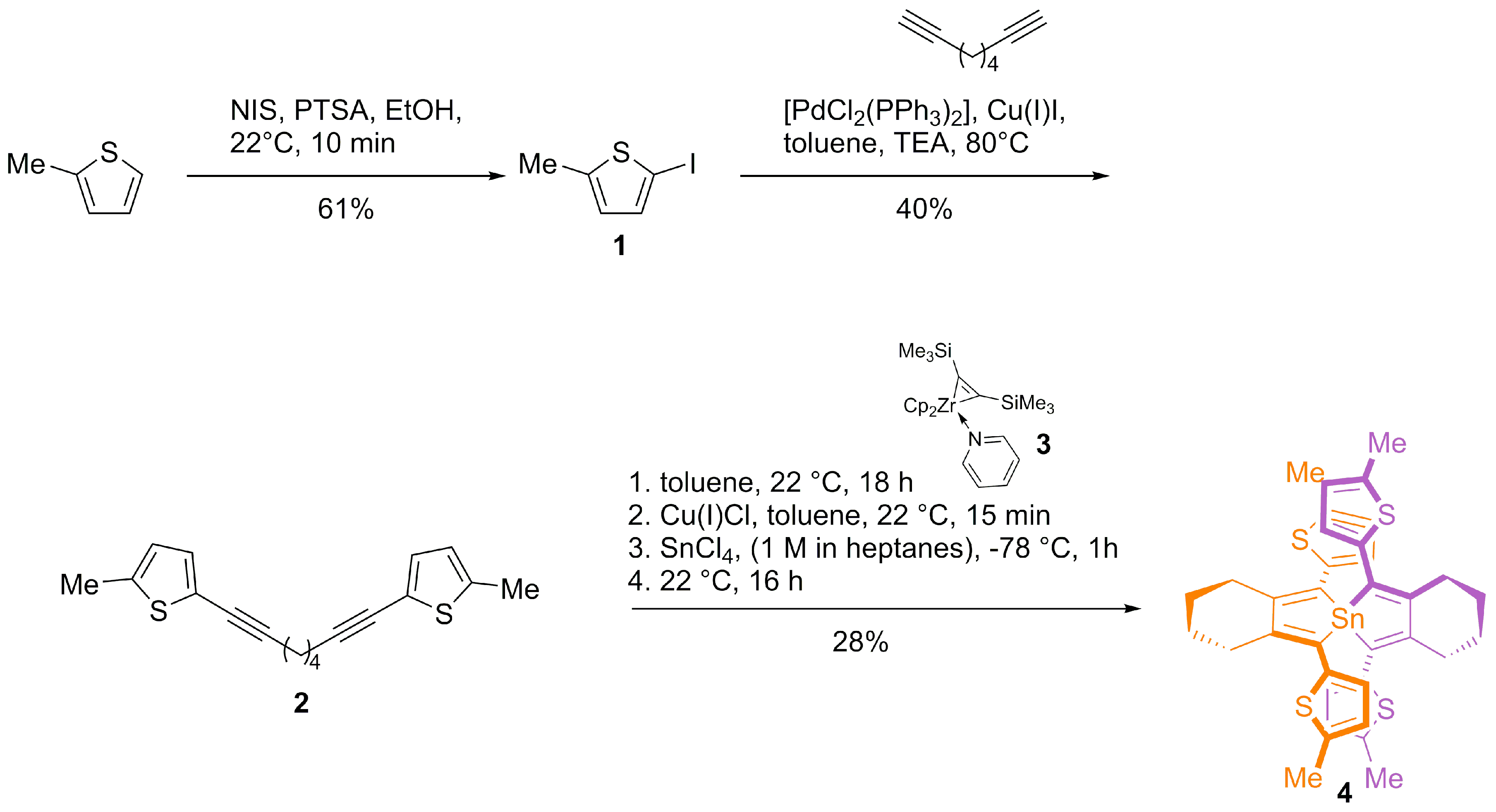
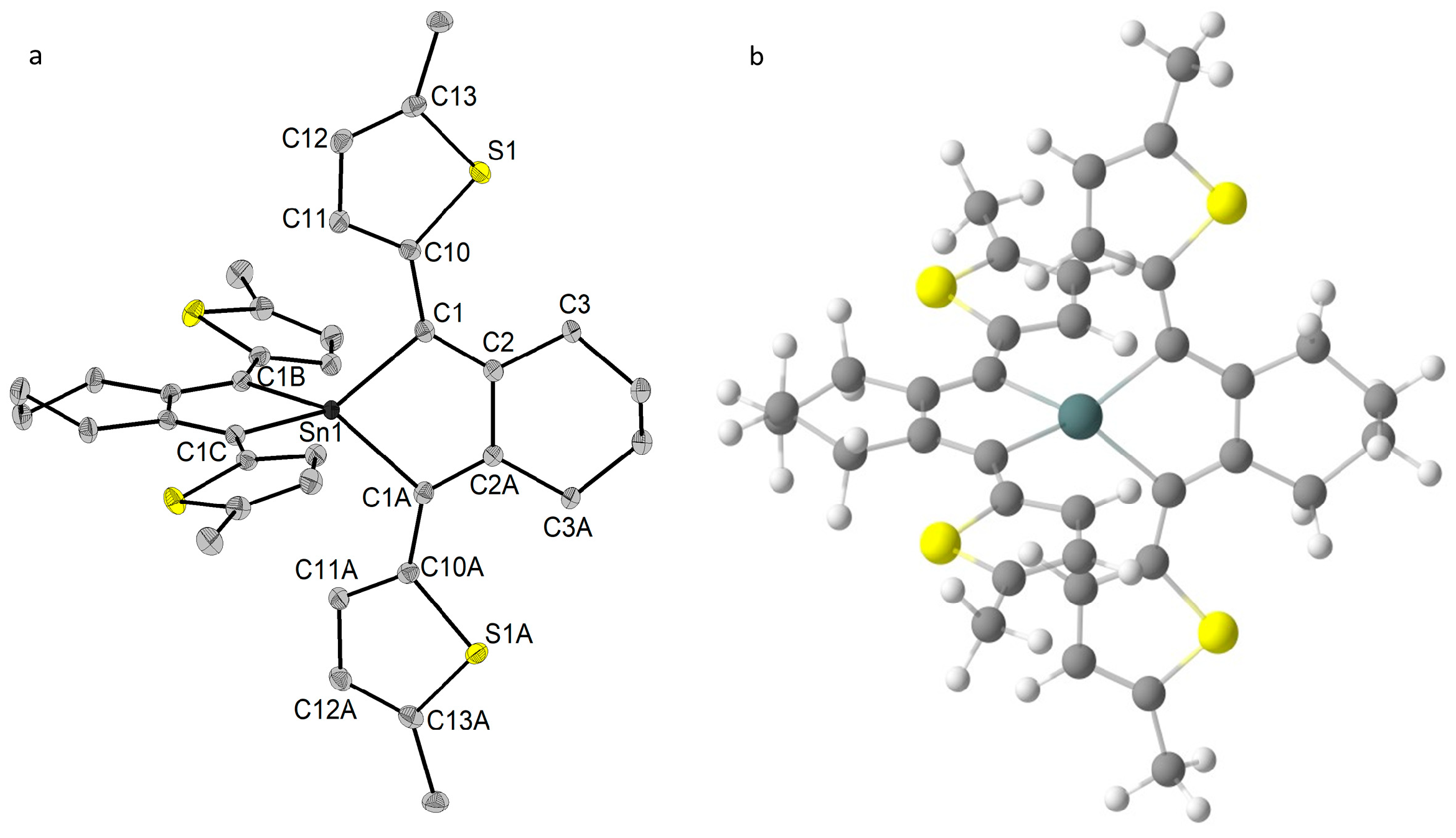
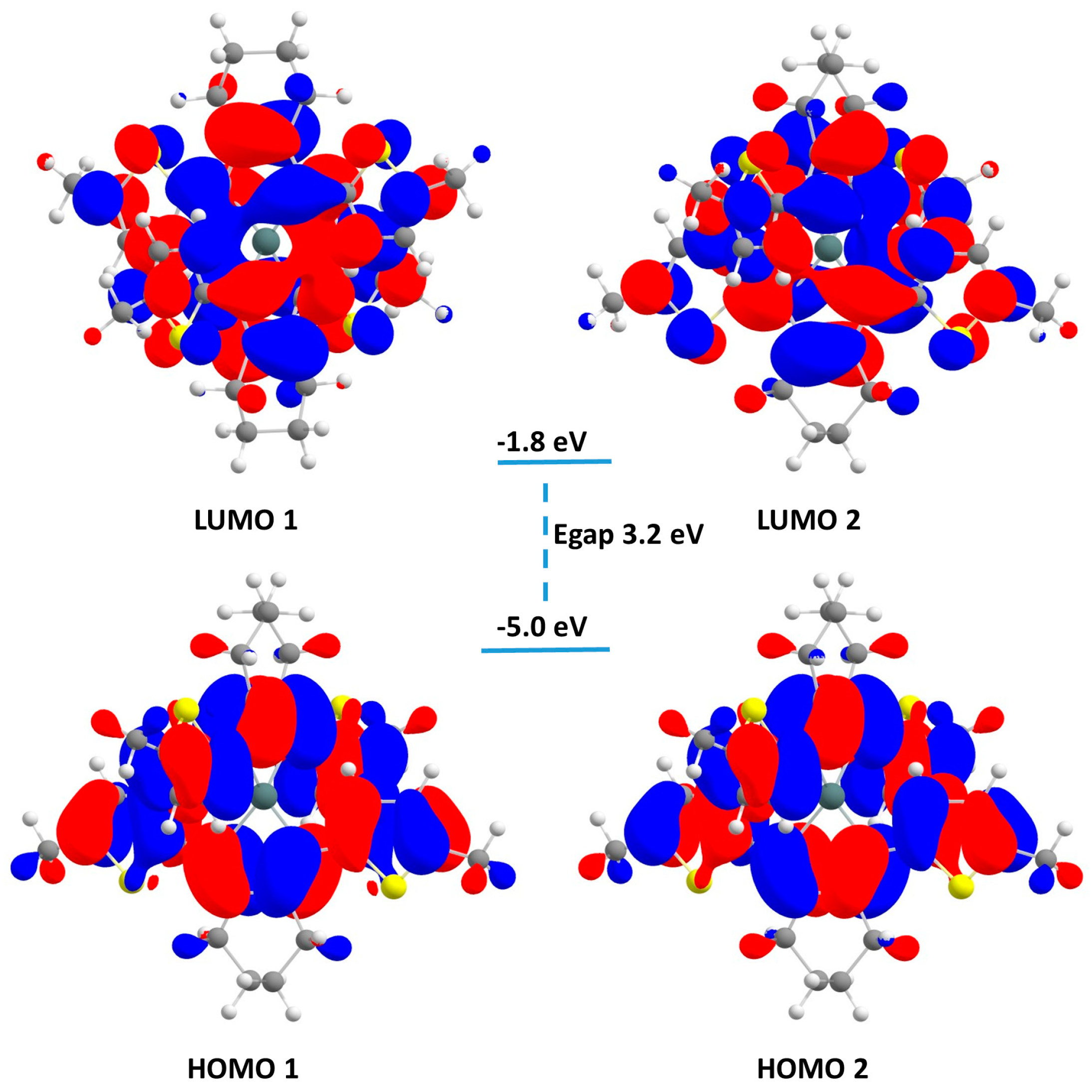
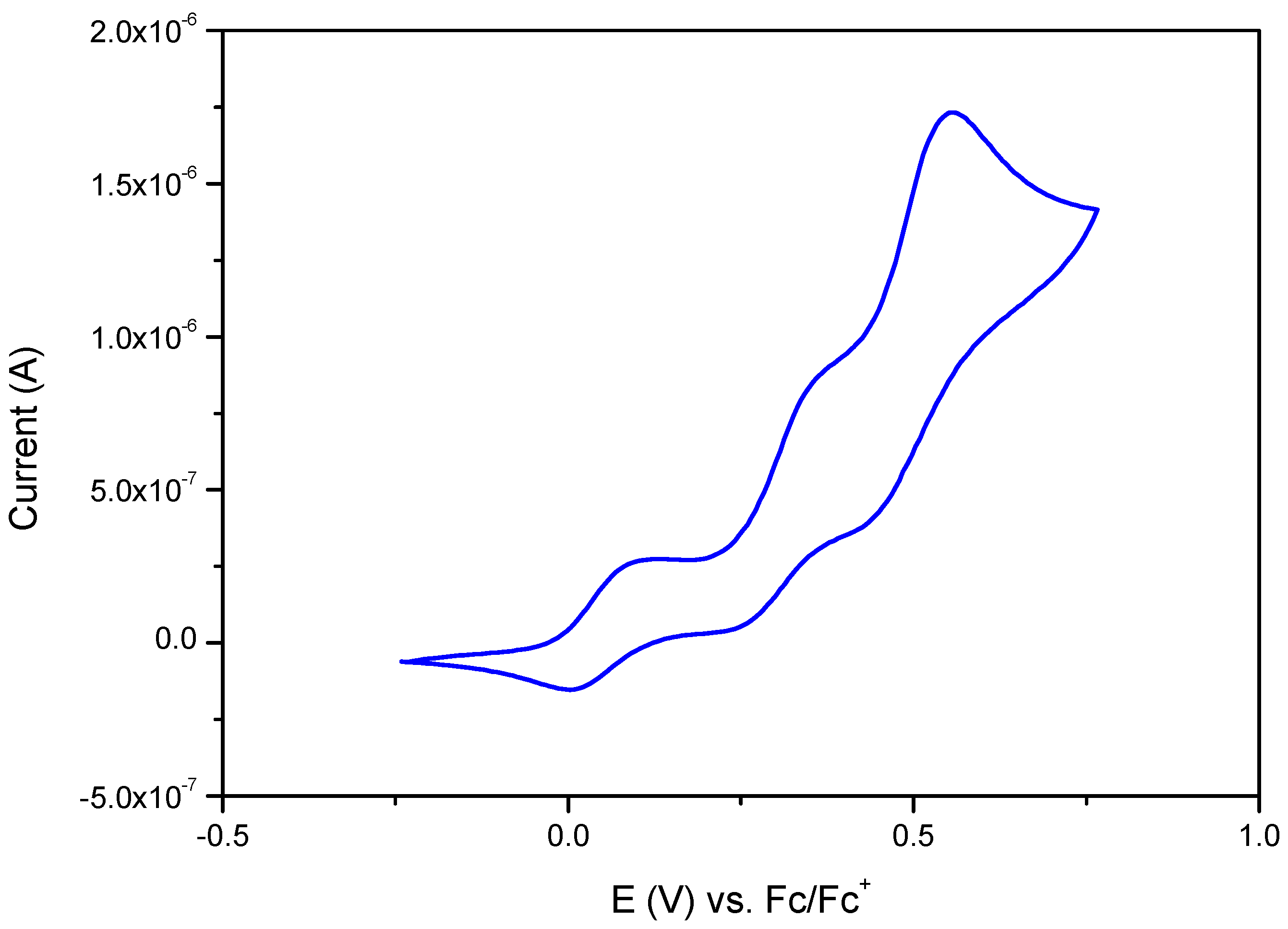

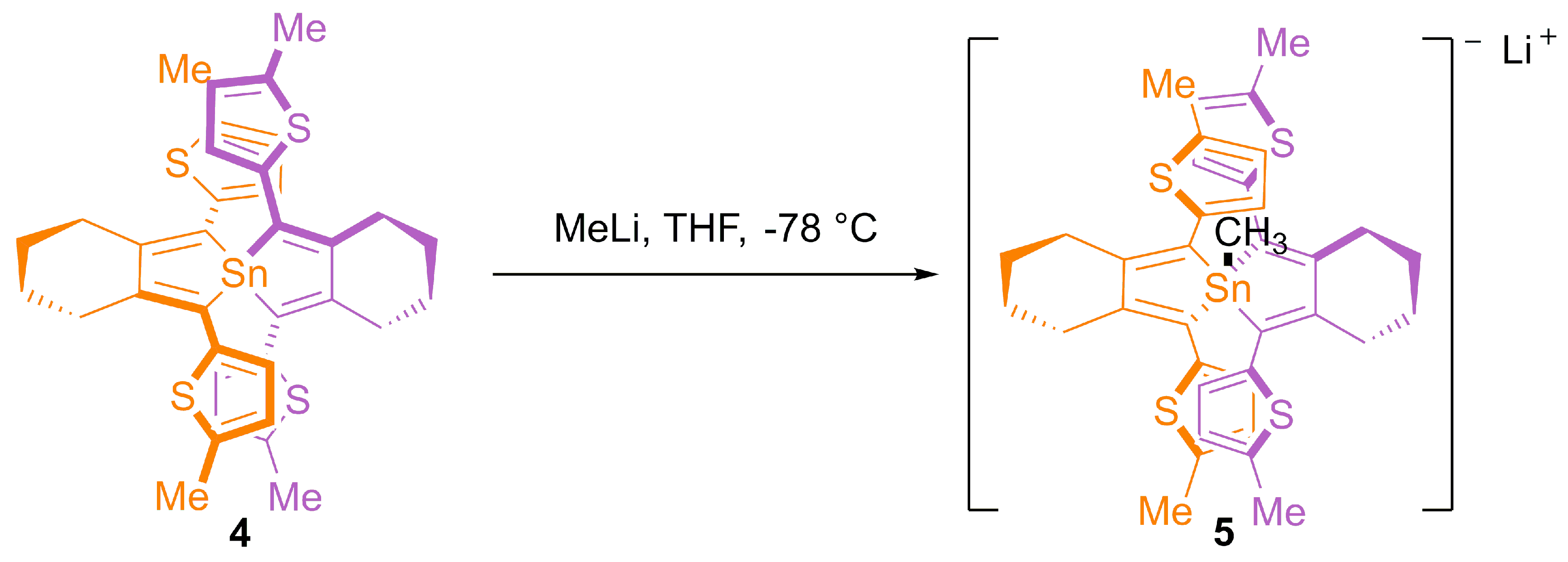
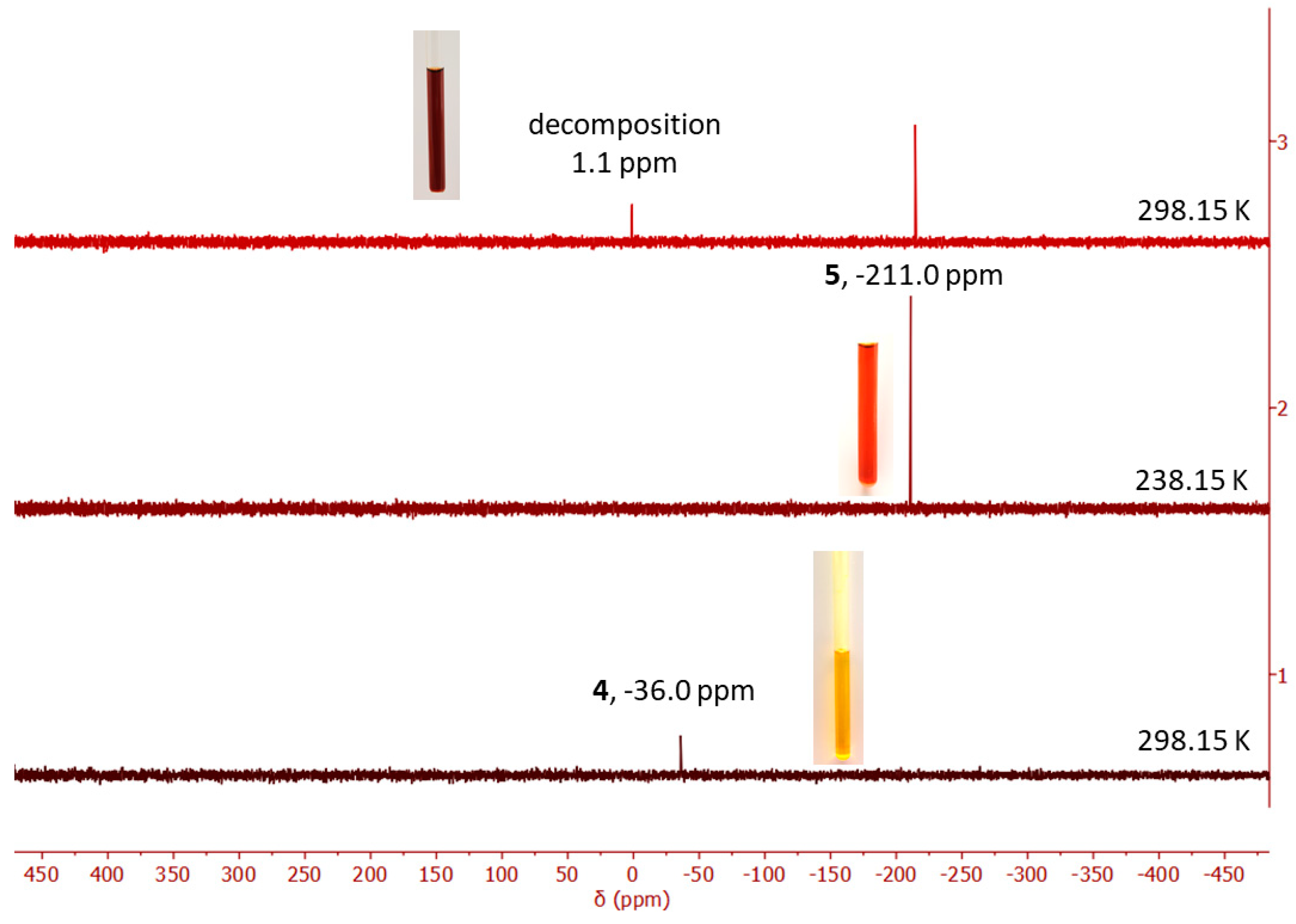

| Epa (mV) | Epc (mV) | E1/2 (mV) | |∆Ep|= |Epc-Epa| (mV) |
|---|---|---|---|
| 93.0 | 2.9 | 48.0 | 90.1 |
| 359.9 | 244.3 | 302.1 | 115.6 |
| 556.4 | 440.0 | 498.2 | 116.4 |
Sample Availability: Samples of the compounds are not available from the authors. | |
Publisher’s Note: MDPI stays neutral with regard to jurisdictional claims in published maps and institutional affiliations. |
© 2020 by the authors. Licensee MDPI, Basel, Switzerland. This article is an open access article distributed under the terms and conditions of the Creative Commons Attribution (CC BY) license (http://creativecommons.org/licenses/by/4.0/).
Share and Cite
Ramirez y Medina, I.-M.; Rohdenburg, M.; Kipke, W.; Lork, E.; Staubitz, A. Experimental and Theoretical Studies of a Spirostannole and Formation of a Pentaorganostannate. Molecules 2020, 25, 4993. https://doi.org/10.3390/molecules25214993
Ramirez y Medina I-M, Rohdenburg M, Kipke W, Lork E, Staubitz A. Experimental and Theoretical Studies of a Spirostannole and Formation of a Pentaorganostannate. Molecules. 2020; 25(21):4993. https://doi.org/10.3390/molecules25214993
Chicago/Turabian StyleRamirez y Medina, Isabel-Maria, Markus Rohdenburg, Waldemar Kipke, Enno Lork, and Anne Staubitz. 2020. "Experimental and Theoretical Studies of a Spirostannole and Formation of a Pentaorganostannate" Molecules 25, no. 21: 4993. https://doi.org/10.3390/molecules25214993
APA StyleRamirez y Medina, I.-M., Rohdenburg, M., Kipke, W., Lork, E., & Staubitz, A. (2020). Experimental and Theoretical Studies of a Spirostannole and Formation of a Pentaorganostannate. Molecules, 25(21), 4993. https://doi.org/10.3390/molecules25214993







